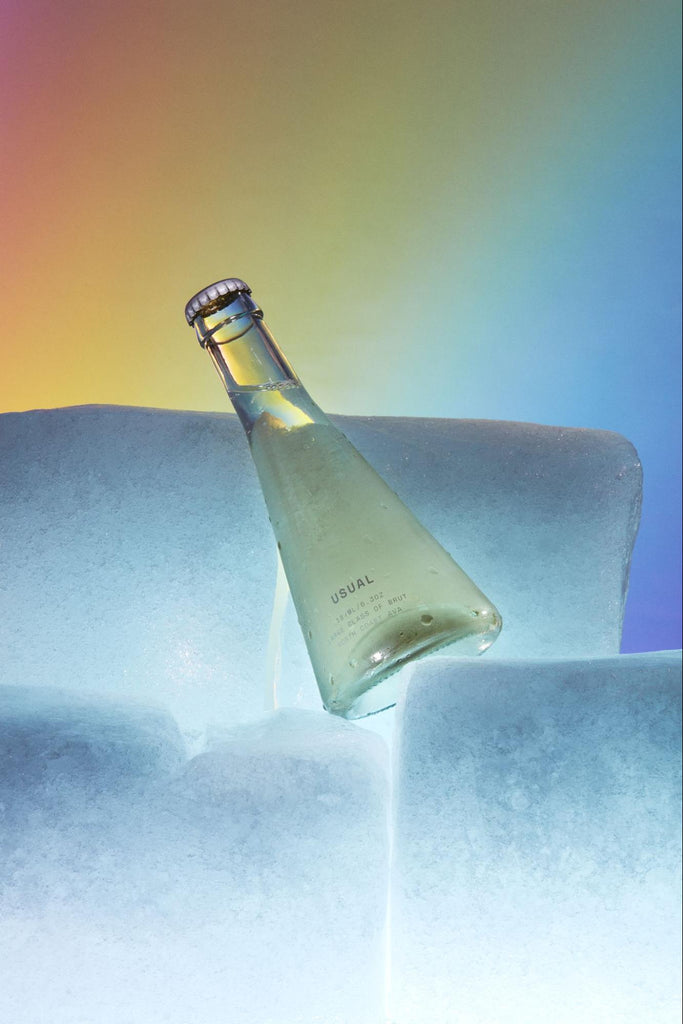Your cart looks a little empty!
Continue Shopping
Prosecco Wine: All You Need To Know About The Taste of This Italian Classic
McKenzie Hagan |
We don’t know why, but whenever the sun is shining, the conversation is flowing, and the weekend ahead promises fun, all we want to drink is Prosecco wine.
Boasting fresh floral flavors, zingy acidity, and of course plenty of bubbles, Prosecco is such a joy to drink. But, is Prosecco merely a cheap alternative to Champagne? If we can afford it, should we opt for the French sparkling wine over this more reserved Italian option?
Let us give you the lowdown on Prosecco wine. We’ll guide you through all you need to know about this lovely bubbly, including where it comes from, how it's made, and how to pair it with food.
Understanding Prosecco Wine: Is Prosecco Wine?
Prosecco is indeed a wine, but not just any wine. It is a sparkling wine that hails from Northeastern Italy. In the same way wines produced in Champagne are named after their native home, Prosecco wine is named after the Italian town of Prosecco, which is a suburb of Trieste.
While Prosecco is accepted as an Italian wine, the grape used to produce it was actually brought over to Italy from Slovenia. Prosecco grapes were formerly known as glera grapes, until 2009 when Italian winemakers decided to rid the grape of its Slovenian roots and remarket the grape as Prosecco.
Prosecco comes in a wide range of styles, although the brut and extra brut styles are by far the most popular. Brut means the sparkling wine is dry, so if you’ve had a glass of bubbles that leaves your mouth puckering, chances are it’s a brut.
There are three common dryness levels you should know about when it comes to Prosecco:
- Brut nature: The driest of the dry
- Extra brut: Another term for extra dry
- Brut: Another term for dry and the most common Prosecco style on the market
So, How Does Prosecco Differ From Champagne?
Many wine lovers only think of Prosecco as a cheaper alternative to Champagne, but the two wines are very different.
First, these sparkling wines are made from completely different grapes. While Champagne is produced from a mix of Pinot Noir and Chardonnay grapes, Prosecco is only made using Prosecco (glera) grapes.
Second, the two wines are produced using different winemaking methods. While Champagne uses older, more traditional techniques, Prosecco producers utilize technology and have created more economical ways of producing high-quality wines.
Furthermore, Prosecco is not always the cheaper of the two. Some of the best Proseccos are premium wines with premium price tags.
These premium Proseccos are produced in protected wine regions in small batches. There are several Prosecco quality levels to look out for, but the two at either end of the scale are:
- Prosecco DOC: This means the wine has a controlled designation of origin. It is the most common.
-
Prosecco Superiore DOCG: This wine has had to follow strict quality rules. If a wine has this symbol on the bottle, it is considered one of the finest Proseccos.
In the sparkling wine category, Prosecco holds its own against other popular options like Champagne and Cava. While it's often viewed as a budget-friendly alternative to its French counterpart, Prosecco offers a distinct flavor profile that's both refreshing and versatile. So next time you're selecting a sparkling wine, give Prosecco a try. You might find it to be a delightful surprise.
The Making of Prosecco Wine

Just as any white wine is made, Prosecco is produced by crushing, fermenting, and maturing grapes, thus creating alcohol. However, to give Prosecco wines their iconic sparkle, winemakers must add a few extra steps.
Wines become sparkling wines when they are fermented for a second time, causing a release of CO2 to carbonize the wines.
There are several ways to make wine fizzy. Each method has its pros and cons, but there isn’t really a right or a wrong way to do it.
The first way is known as the traditional method, and this is how Champagne gets its bubbles.
When using the traditional method, winemakers take fermented wine, bottle it, and then add yeast and sugar, which causes a second fermentation. The wine is then aged, with the winemakers painstakingly rotating the bottles daily to move the dead yeast cells to the neck of the bottle. Then, winemakers add in sugar to sweeten the wine and up the alcohol content.
Prosecco producers do not use the traditional method. Instead, they use what is known as the tank method, or the Charmat Method. Using this technique, winemakers mix the base white wine with yeast and sugar in a large pressure-resistant tank to cause a second fermentation. This wine is then sent through a filtering system, and the sugar is added. This helps retain the fresh and fruity characteristics of the Prosecco grapes while adding the delightful bubbles we all love.
What Does Prosecco Taste Like: Is Prosecco Sweet?
Let's explore more about the sweetness level in Prosecco. Prosecco wines are most commonly enjoyed in the dry or extra dry style; however, due to the sweet fruity flavors of the grape, it often tastes sweeter than it is. However, the perception of sweetness can also be influenced by factors like acidity and temperature. A chilled Prosecco can taste less sweet than a warmer one, and higher acidity can mask some of the sweetness as well. So when you ask 'is Prosecco sweet?', the answer can be quite subjective!
A bottle of Prosecco may have common tasting notes of zingy citrus or lemongrass,or qualities of green apple, white peach, and honeydew. Prosecco also has incredible floral aromas, which add to the tasting experience. Tasters often comment on the sweet, honeysuckle-like aromas.
Compared to Champagne, Prosecco has simple, clean flavors. While Champagne often has notes of brioche or almonds, Prosecco is all about those sharp fruity notes, which dance on the tongue.
If you’re after something a little more complex, Champagne is probably the best choice for you. However, if you want something fresh, fruity, and simple, Prosecco is the way to go.
Food Pairings With Prosecco
Due to the sharp fruit flavors and the high acidity of Prosecco, this humble bubbly pairs beautifully with a wide range of dishes.
The complex flavors of Prosecco make it an excellent choice for various food pairings. Although it's traditionally paired with Italian cuisine, don't be afraid to experiment.This Italian classic can add a sparkle to your meal, irrespective of your culinary preference.
While Prosecco is often enjoyed as an aperitif, or before a meal as an appetizer, it makes a charming accompaniment to spicy Asian foods, hot curries, and shellfish.
However, our top pick for pairing food with Prosecco has to be alongside brunch. Whether you’re digging into a plate of poached egg and smoked salmon or celebrating with a stack of French toast, a bottle of Prosecco shared among friends is the perfect way to get the weekend started.
How To Serve Prosecco Wine
Prosecco should be served in a tulip glass, or Champagne flute. These long, slim glasses help to preserve the bubbles for longer, allowing each mouthful to be just as fizzy as the first.
It’s best to keep Prosecco chilled. This not only sharpens the flavors and adds to the zingy qualities of the wine, but it’s also safer. Because Prosecco is carbonated, when it gets too warm, it can cause the cork to slowly move and, before long, pop right out! While a flying cork probably isn’t fast enough to seriously hurt anyone, you could end up wasting a perfectly good bottle.
While purists may disagree, Prosecco is a great base for a fruity cocktail. Both Bellinis and mimosas are delicious ways to enjoy a nice bottle of Prosecco. For the perfect Bellini, simply add one part peach juice to two parts Prosecco. For a mimosa, do the same, but with orange juice. At Usual Wines, we also sell our own Brut Spritz, which puts a spin on the classic Bellini by mixing guava juice and Brut sparkling wine.
To really give your taste buds a treat, mix Prosecco with Aperol and soda water to make the ultimate Italian summer drink, the iconic Aperol Spritz.
Lovely Bubbly

Perhaps destined to live in Champagne’s shadow forever, Prosecco has a reputation as a cheaper, lower-quality sparkling wine.
However, this incredibly versatile and refreshing wine has plenty of tricks up its sleeve. With an array of styles on the market, awesome food pairing options, and a complex culture, Prosecco is iconic in its own right.
If you're questioning, 'Is Prosecco wine?', the answer is a definite 'yes'. Prosecco is not only a wine, but a wine with depth and variety, bringing you a range of flavors and experiences with each sip.
If you love the sharp acidity of Prosecco, don’t forget to check out our Brut, which is light, refreshing, and has notes of lemon and elderflower.
Share
